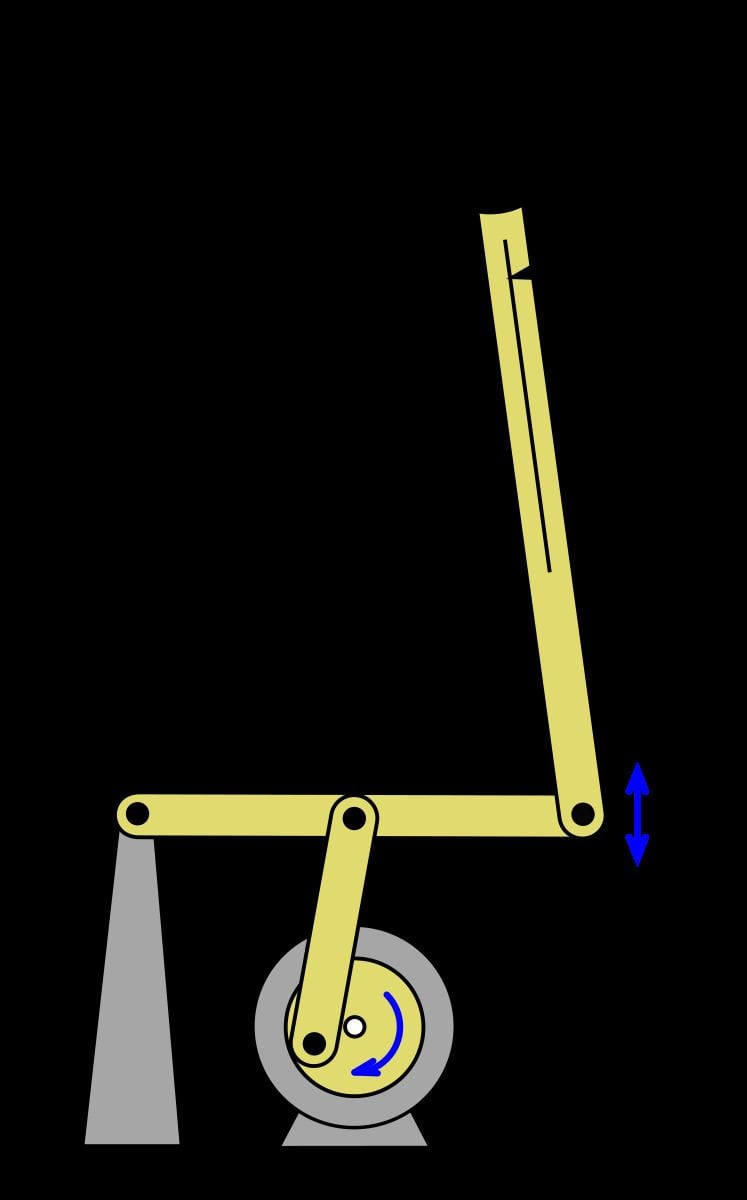 | ||
Kapitza's pendulum is a rigid pendulum in which the pivot point vibrates in a vertical direction, up and down. It is named after Russian Nobel laureate physicist Pyotr Kapitza, who in 1951 developed a theory which successfully explains some of its unusual properties. The unique feature of the Kapitza pendulum is that the vibrating suspension can cause it to balance stably in an inverted position, with the bob above the suspension point. In the usual pendulum with a fixed suspension, the only stable equilibrium position is with the bob hanging below the suspension point; the inverted position is a point of unstable equilibrium, and the smallest perturbation moves the pendulum out of equilibrium. In nonlinear control theory the Kapitza pendulum is used as an example of a parametric oscillator that demonstrates the concept of "dynamic stabilization".
Contents
- Notation
- Energy
- Equations of motion
- Equilibrium positions
- Rotating solutions
- Phase portrait
- Interesting facts
- References
The pendulum was first described by A. Stephenson in 1908, who found that the upper vertical position of the pendulum might be stable when the driving frequency is fast Yet until the 1950s there was no explanation for this highly unusual and counterintuitive phenomenon. Pyotr Kapitza was the first to analyze it in 1951. He carried out a number of experimental studies and as well provided an analytical insight into the reasons of stability by splitting the motion into "fast" and "slow" variables and by introducing an effective potential. This innovative work created a new subject in physics, that is vibrational mechanics. Kapitza's method is used for description of periodic processes in atomic physics, plasma physics and cybernetical physics. The effective potential which describes the "slow" component of motion is described in "Mechanics" volume of the Landau's Course of Theoretical Physics.
Another interesting feature of the Kapitza pendulum system is that the bottom equilibrium position, with the pendulum hanging down below the pivot, is no longer stable. Any tiny deviation from the vertical increases in amplitude with time. Parametric resonance can also occur in this position, and chaotic regimes can be realized in the system when strange attractors are present in the Poincaré section .
Notation
Denote the vertical axis as
Denoting the angle between pendulum and downward direction as
Energy
The potential energy of the pendulum is due to gravity and is defined by of the vertical position as
The kinetic energy in addition to the standard term
The total energy is given by the sum of the kinetic and potential energies
The total energy is conserved in a mathematical pendulum, so time
In the case of vibrating suspension the system is no longer is a closed one and the total energy is no longer conserved. The kinetic energy is more sensitive to vibration compared to the potential one. The potential energy
Equations of motion
Motion of pendulum satisfies Euler–Lagrange equations. The dependence of the phase
where the Lagrangian
up to irrelevant total time derivative terms. The differential equation
which describes the movement of the pendulum is nonlinear due to the
Equilibrium positions
Kapitza's pendulum model is more general than the simple pendulum. The Kapitza model reduces to the latter in the limit
When the suspension is vibrating with a small amplitude
The equation of motion for the "slow" component
Time-averaging over the rapid
The "slow" equation of motion becomes
by introducing an effective potential
It turns out that the effective potential
Rotating solutions
The rotating solutions of the Kapitza's pendulum occur when the pendulum rotates around the pivot point at the same frequency that the pivot point is driven. There are two rotating solutions, one for a rotation in each direction. We shift to the rotating reference frame using
Again considering the limit in which
The effective potential is just that of a simple pendulum equation. There is a stable equilibrium at
Phase portrait
Interesting phase portraits might be obtained in regimes which are not accessible within analytic descriptions, for example in the case of large amplitude of the suspension
Further increase of the amplitude to
